All inclusive
More and more users are trying to get rid of cumbersome system blocks - the same laptops are becoming increasingly popular, due to their compact size and sufficient performance for most tasks.

But, as they say, people are no longer fed up with laptops - there is something interesting besides the “books”. Think about the tablets? No, no, how many can be about them ... let's better talk about monoblocks. With me - a review (with analysis!) Of a new device from Foxconn, with you - reflections on this class of devices, application scenarios and other ideas for getting rid of “dust collectors”)
I will not beat around the bush, but go straight to the specifications - as you were asked to do. Let's begin!
')

Processor : Intel Core i7-640M (two cores, 2.8 GHz, 4 MB L3, 32 nm, TDP 35 W, Intel 64)
Chipset : Intel H55
Graphics subsystem : ATI Mobility Radeon HD 5450 (1024 MB GDDR3)
RAM : 4096 MB, DDR3 PC3-10700 (667 MHz), two slots
Data storage : 2.5 '' Western Digital hard disk with 500 GB + 1.8 '' Toshiba 30 GB SSD.
Operating system : Microsoft Windows 7
Display : 21.5 ", 1920x1080 (16: 9, FullHD), glossy, touch (capacitive)
Drive : SlimType slot-loading DVD drive
Connectors : 6xUSB (2.0), eSATA, VGA, HDMI, RJ-45, DC-in, SPDIF-out, TV Tuner, YPrPb, Audio R / L, headphone and microphone jacks.
Wireless interfaces : Bluetooth (2.1 + EDR), Wi-Fi (802.11b / g / n)
Card reader : MMC / SD (SDHC)
Camera : 1.3 MP
Optional : remote control, wall mount option (VESA)
Body Material : Plastic
Dimensions : 542 x 374 x 48 mm
Weight : 7 kg
I will warn you in advance: most likely a slightly different series of devices will be on sale, which will be built on a different chipset - not on Intel H55 , but on Intel H61 . Accordingly, the processor will be different - Intel Core i3 / i5 (Sandy Bridge) and the name of the all-in-one (presumably Ai6100 ). There will be several modifications, but I have no exact specifications yet.
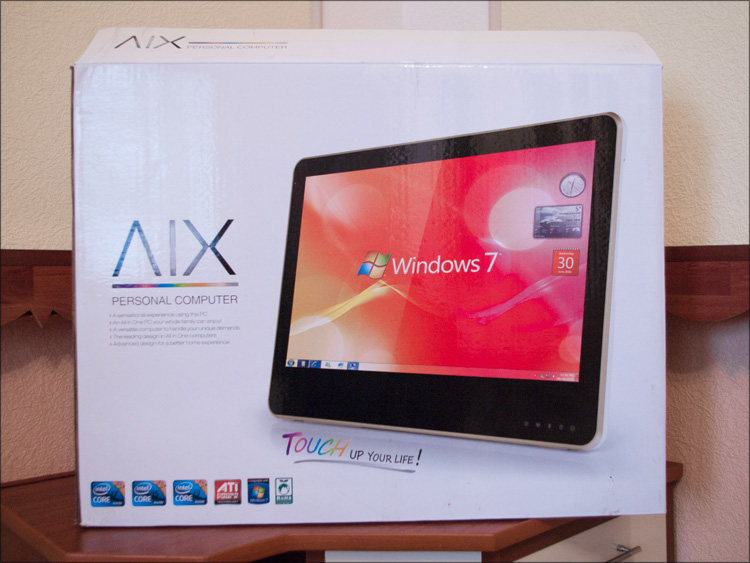
The box is large - it is quite possible to use this after unpacking on the farm. And initially it was:
- Monoblock
- Adapter from DVI to HDMI
- Adapter for TV antenna
- AC adapter and power cord
- remote control and 2 batteries
- VESA mount
- Fiber rag
- CD with software
- Manual

There was neither a mouse nor a keyboard ... I dare to suggest that there are two options - either the manufacturer made some elegant solution for entering data through the touch screen, or the choice of peripherals was left on the buyers conscience. The second option from the very beginning was a bit predictable ... so it came out.
The entire front panel is completely glossy - even when I just took the device out of the box, I felt like pieces of salt were falling on my wounds) And my fears were not without reason - the screen was very bright, so the matte film did not hurt here. Where can I get a matte film of this size? A good question - most likely you will have to make an order, the benefit is also possible.
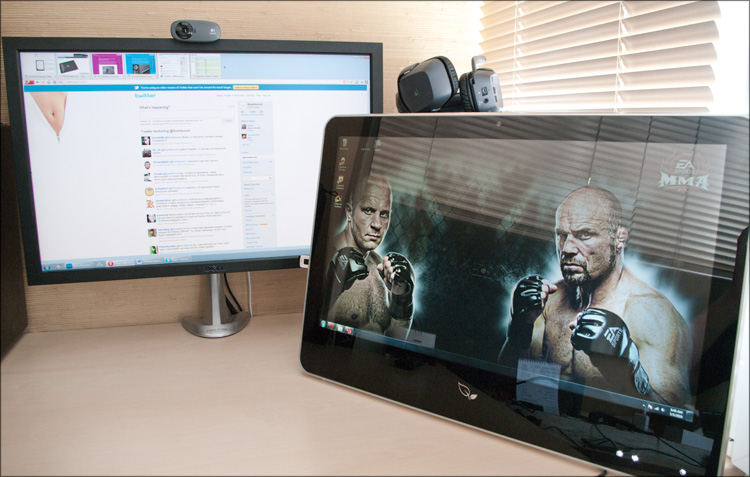
But with the stability of the panel to fingerprints full order - if the iPad (without film) can be wiped at least every 10 minutes, then there were almost no prints for two days of use.
There is a fairly thick black frame around the screen, but it is under the glass, so there are no obstacles to the care of the display. Top - the camera.
Below is a logo of two leaves; it looks pretty nice, but, to be honest, I see such a logo for the first time - the query “Foxconn logo” in Google did not confirm my guesses. A little later, it turned out that the product from the category “To be filled by OEM” was in front of me, that is, first of all, we could expect this device to appear in retail under the brands of other companies. And with the “leaves”, it is possible that unbranded barebone versions of a monoblock without a hard disk, tuner and memory will be on sale.

Along the entire perimeter of the front panel there is a thin plastic edge that smoothly passes into the back cover. The case itself is made of plastic - also glossy) But then there is no talk about prints at all - firstly on the white plastic prints are almost never visible (there will be modifications with other colors, such as blue or orange), and secondly the back cover with everyday use can be classified as hard-to-reach places, so you will only have to look in there once, during the first connection.
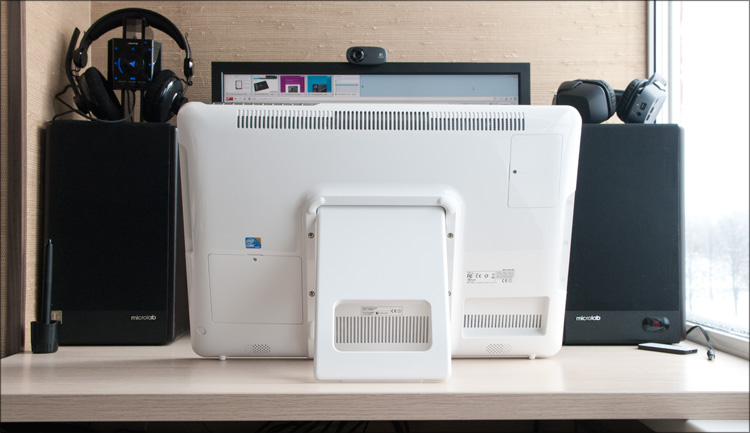
At the top there are 10 buttons divided into groups (Source, 4xOSD, 2xChannel, 2xVolume and LCD off); next to them is a built-in microphone.
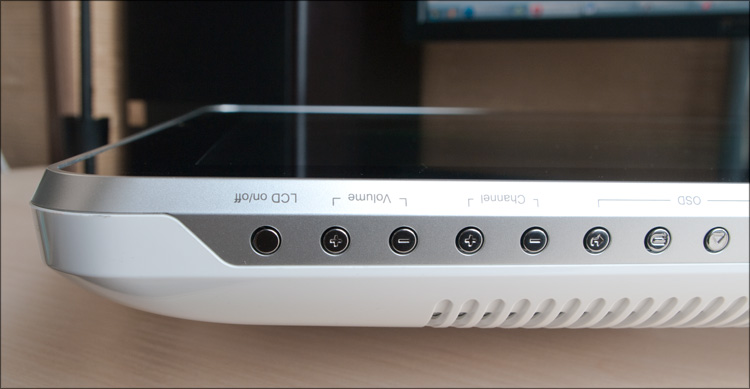
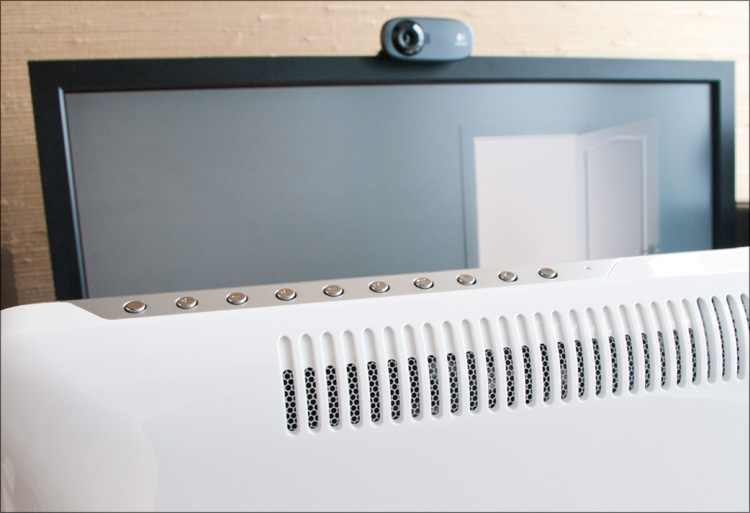
On the right (when viewed from the front) is the drive slot, and on the left, the interfaces most in demand in everyday use.

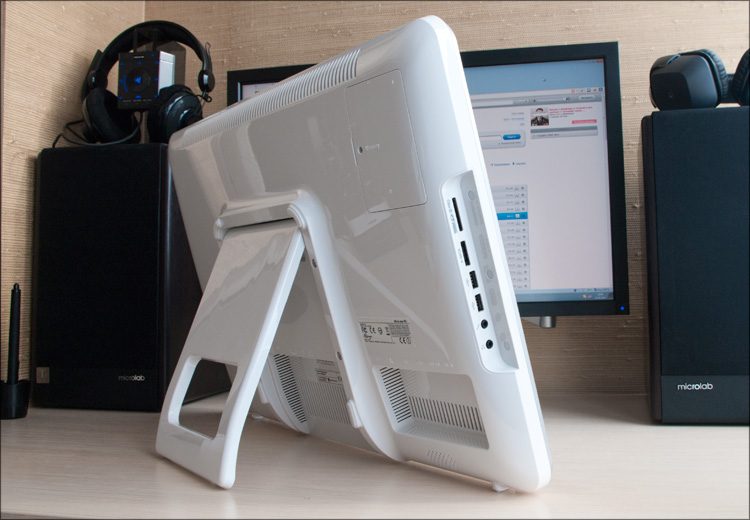
The remaining connectors of the device are located on the back side and are divided into two groups. The first group is in a small depression on the right:
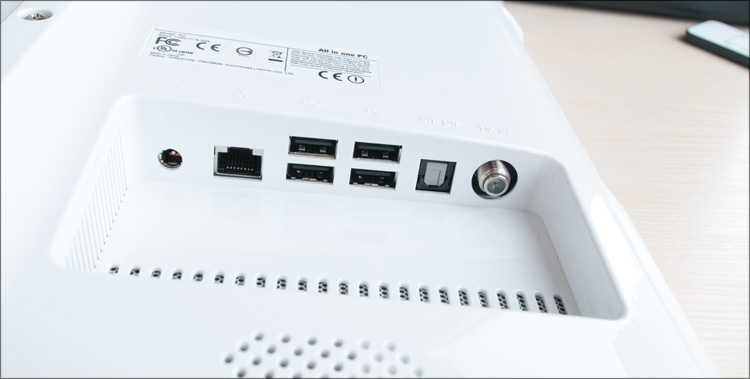
And the second - under the support.

The power button of the monoblock is on the back side, closer to the right edge - it is imperceptible, but you get used to its location in 2-3 inclusions.
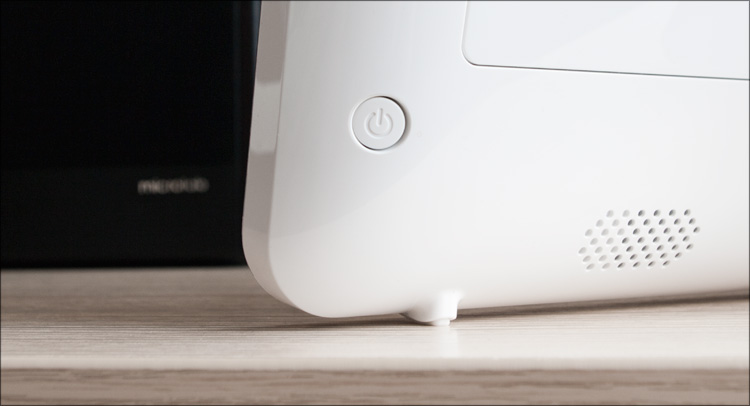
By the way, as the first launch of the system showed, there are also several rather bright white LEDs on the front panel:
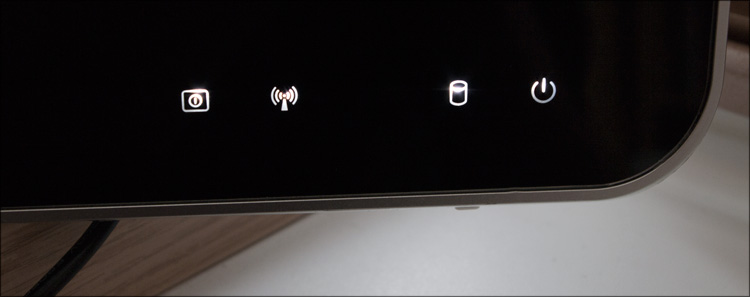
During operation, they are lit depending on the status of the work of the filling (Wi-Fi, Bluetooth, Power, etc.) and at first the feeling that these are touch buttons did not leave me. But no, you can't press them, but you won't be able to turn them off with regular means either.
On the back side there are also two covers of the system compartments, behind which everything is quite predictable. But there is a small surprise in those parts ... no, I won’t guess ... I offer 100 rubles and we don’t open the white box) In general, I’ll tell you everything below, but you could already notice something if you carefully read the specs at the beginning of the article.
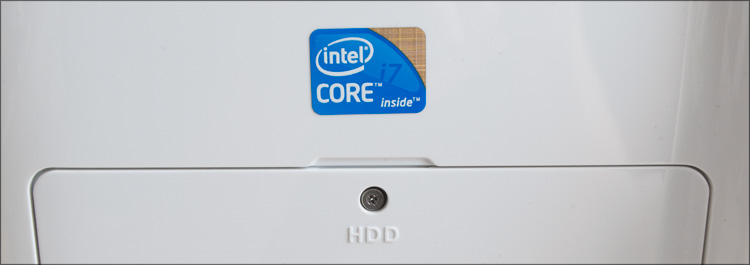
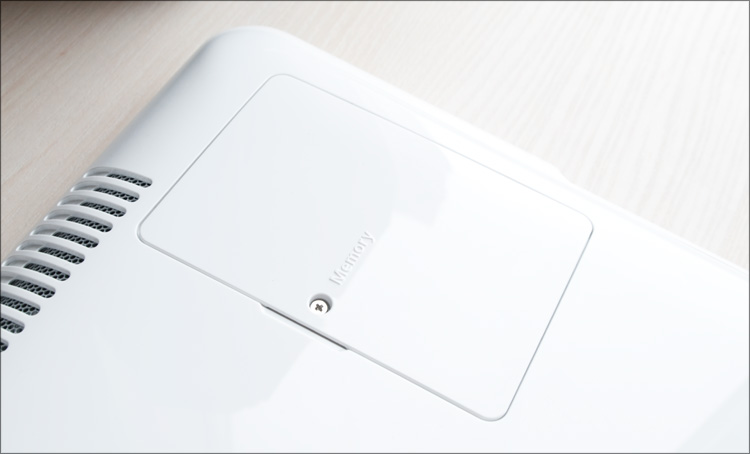
Well, two more points. The monoblock leg is quite massive and allows you to put the device at different angles.

I almost started writing about the battery and battery life ... In general, everything works through an adapter (input: 100-240V ~ 1.8A 50-60Hz, output: 19V, 6.32A), which is very large. But the long power cord allows you to hide it anywhere.
At the request of the workers, I try to look inside each device - what to hide, it’s interesting to me and myself) And I decided not to avoid this candy bar.
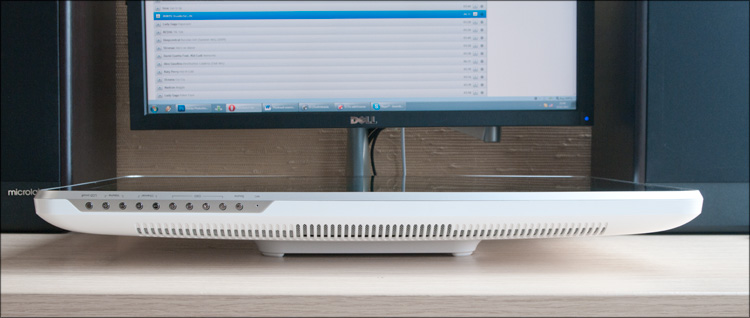
The back cover rests on 9 screws (4 large and 5 small) - some of them are behind the white plugs, and one - under the void-sticker. As it turned out, the lid is made of a single piece of plastic (I always hardly imagine the molds for such products), from the inside of which the metal frame is securely fixed - for attaching the monoblock to the wall.

A superficial study of the viscera has made it clear that only the top holes are used for ventilation - it blows warm air from the processor and video card; accordingly, a part of the holes in the lower part can be safely stuck so that the dust inside does not accumulate so quickly.

General view of the filling:
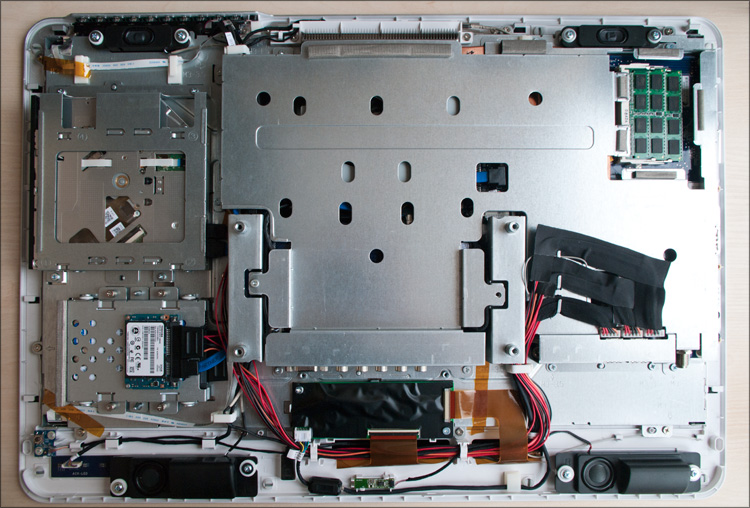
A small tour of the details. Here is the power button and the front panel indicators (if you remove a small handkerchief and place a small translucent pad in front of it, the front panel indicators will not be so bright):

Next to them is one of the speakers - it is attached to the body through a rubber washer, which, apparently, should dampen vibrations and other sound source artifacts:

The second speaker is on the other side. In the middle - a cable to the screen (sort of like) and a light sensor:

Top bar buttons:

The wires of the interfaces are insulated from each other and for order are fixed on the metal frame of the device:
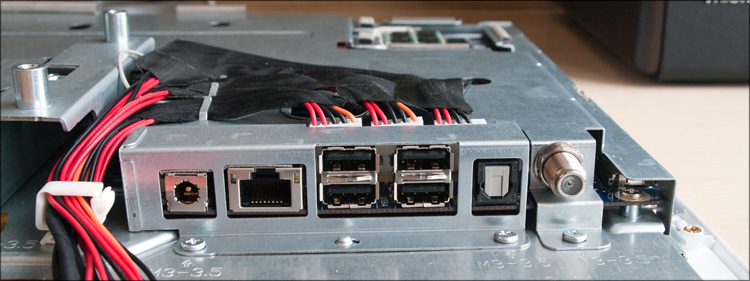
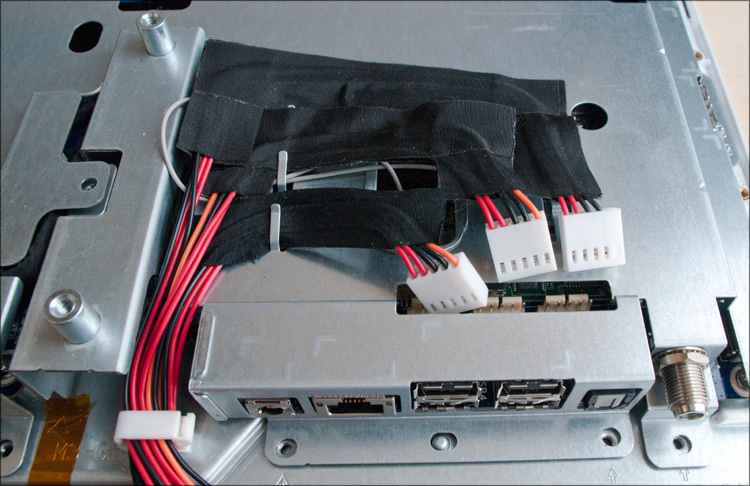

If you unscrew another 15 screws, then you will be able to remove the protective metal frame - just behind it is the most interesting:
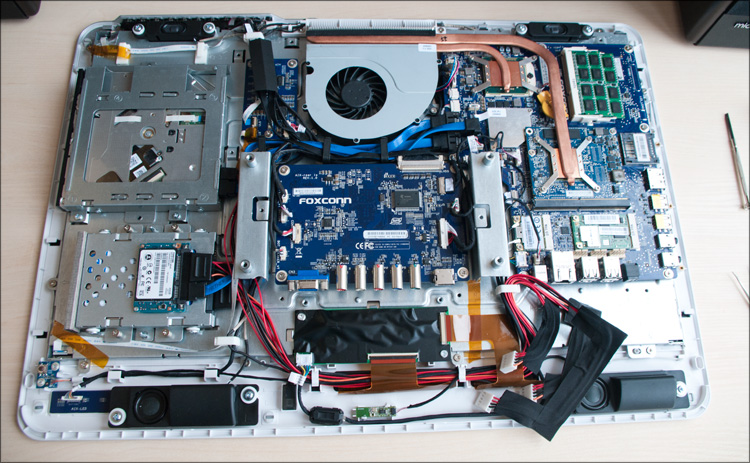
Foxconn’s multimedia board:
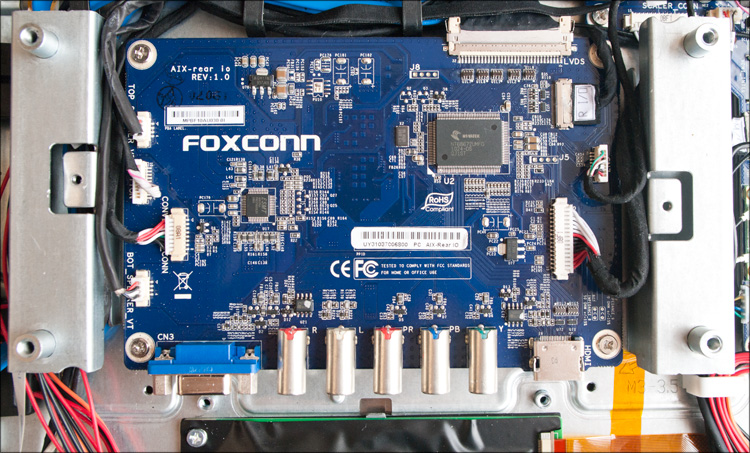
Two mini PCIe connectors, one of which has a Wi-Fi module installed, and the other has a TV tuner from AVerMedia:

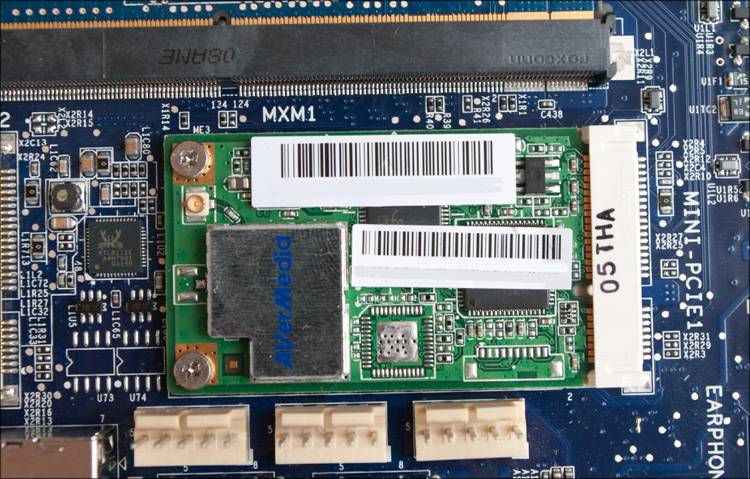
To the only system cooler ...
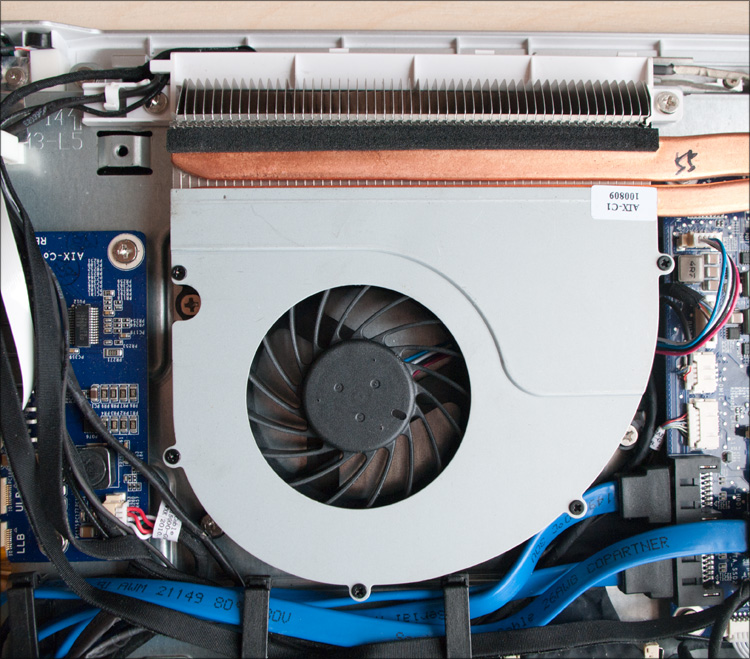
... two copper heat pipes fit - from the processor:

... and video cards:
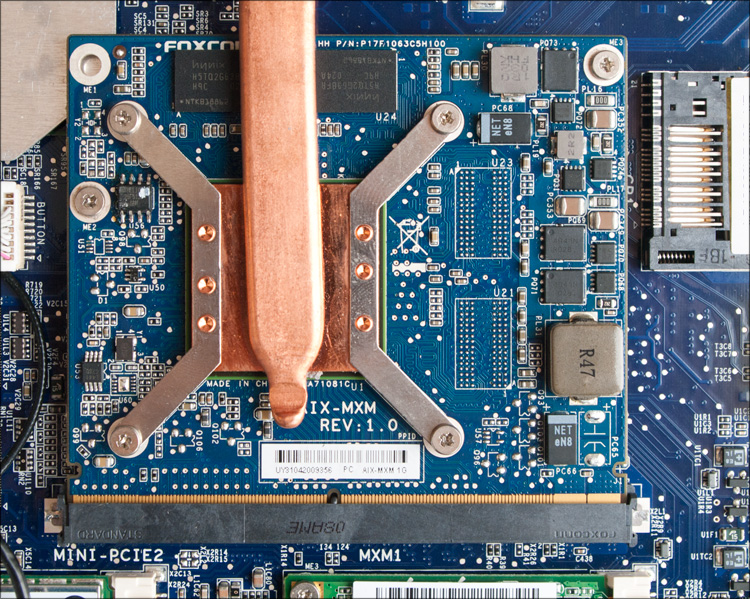
Both the processor and the video card are not soldered on the board, so there is a chance that in the future the monoblock system can be slightly upgraded ... although finding suitable components, IMHO, will be very difficult.
Slot drive. The disks as a data carrier are slowly starting to die off, at least I have long ceased to use them ... but here the device is absolutely not superfluous - it will be easier to rearrange the Windows without bothering with the creation of a bootable USB flash drive.
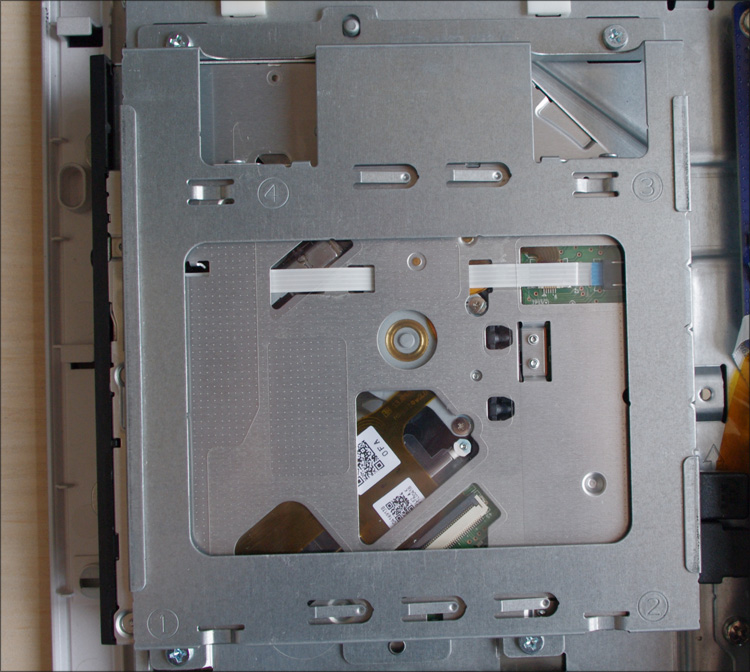
Actually, the hard drive (from WD) and the 30-gigabyte SSD- “parasite” from Toshiba stuck to it) There are no more free SATA-connectors in the system.
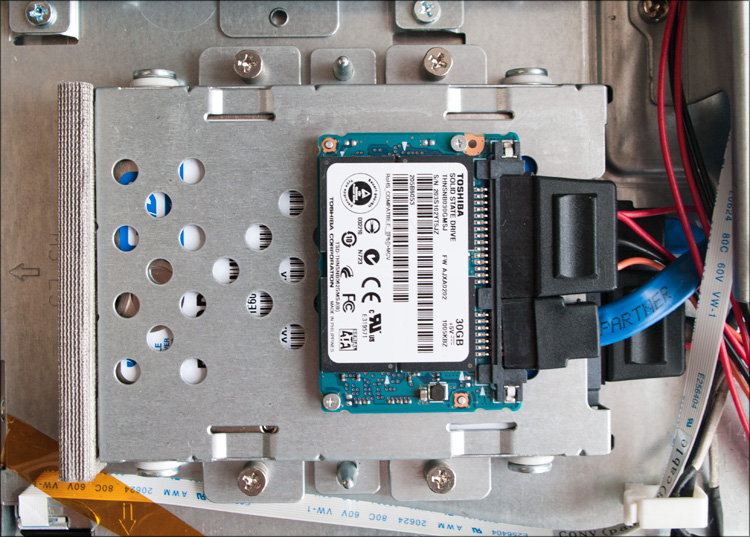
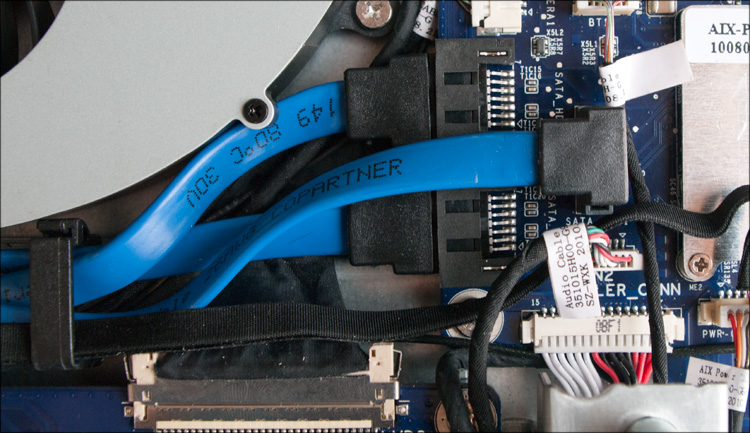
... but there is an unused HDMI connector, which, unfortunately, in this model is in no way connected with the outside world. Perhaps it will turn into the second HDMI-connector in one of the modifications of the monoblock:

In general, everything is done very carefully, conscientiously ... although rare fingerprints are visible in some places :) Given that there were seals on the device, these are definitely the prints of the Chinese from the factory, and not colleagues from the "iron" party ( , and I know them all by prints)).
Honestly, I was surprised at how this device works and how it turns on. You press the power button on the back side ... you hear a one-time crunching of the drive ... and ... and that’s all, you don’t hear anything else! Monoblock Foxconn Ai6100 works very quietly, for which I put a plus in a notebook.
This is an engineering sample of the device, so I closed my eyes to some "flaws". So, for example, initially there was no operating system on it ... more precisely, it was (Windows 7 Pro), but it needed to be “deployed” from a hard disk, which took about 15 minutes to complete.
From the moment you press the power button until the operating system is fully loaded, it takes 20-25 seconds - commendable. The desktop is pretty empty (with the exception of three shortcuts from CyberLink - YouCam, YouMemo and YouPaint), as in the taskbar - sorry, but as a rule, everything on the devices for sale is much more neglected.
The system performance index is 4.6 points, all due to “Graphics” - all other characteristics are higher by a point or even two. It's easier to see it once:
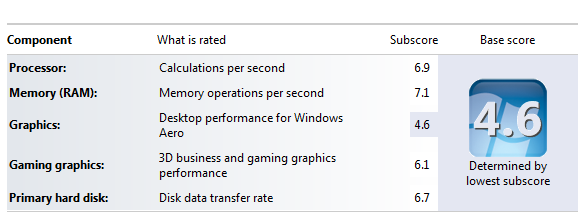
It is commendable - as practice shows, on systems with similar estimates (even if this index is rather abstract) HD movies go without problems - looking ahead, I was not mistaken.
As a processor in this modification of the device, a rather productive dual-core Intel Core i7-640M with a standard clock frequency of 2.8 GHz (up to 3.46 GHz in Turbo Boost mode) is used.

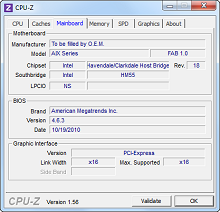


The role of the video card went to ATI Mobility Radeon HD 5450 , which carries a gigabyte of memory. This is an entry-level card with DirectX 11 support - in terms of 3DMark benchmarks it is analogous to GeForce GT 415M . In principle, for most of the tasks such a card is more than enough, but for games this is not the best choice - the same Crysis, NFS Shift and Left 4 Dead will go only at medium detail settings, or even low.

As I said, this device uses a symbiosis of a regular hard disk (500 GB for storing junk) and a solid-state drive (30 GB). The second, as it is easy to guess, is used for the operating system - hence the fast loading time and high scores in the system evaluation ... perhaps this is the combination that is currently the most profitable and it’s great that Foxconn knows about it. Offhand, I do not even remember the device from the same ASUS, which would use the same configuration.
To complete the picture - a couple of screenshots with the speed characteristics of both discs. WD:
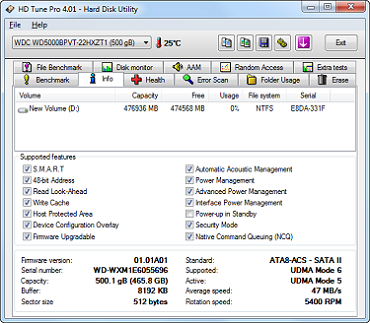
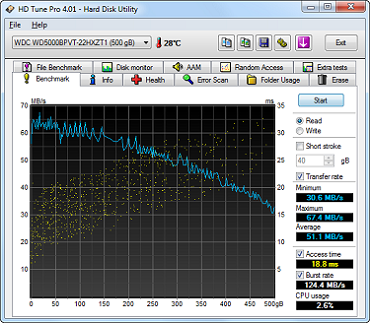
Toshiba:




C FullHD-video is really no problem, moreover, regular speakers would be enough for family watching movies or listening to music. The remote control in this regard is not at all superfluous, although there is nothing outstanding in it; the usual, very high-quality remote control with a metal top and a rubberized “belly”. Initially, there is Windows Media Center on the all-in-one, but if you ask a question about third-party software, the device can be completely hung on the wall of one of the rooms, turning the candy bar into a multimedia processor.
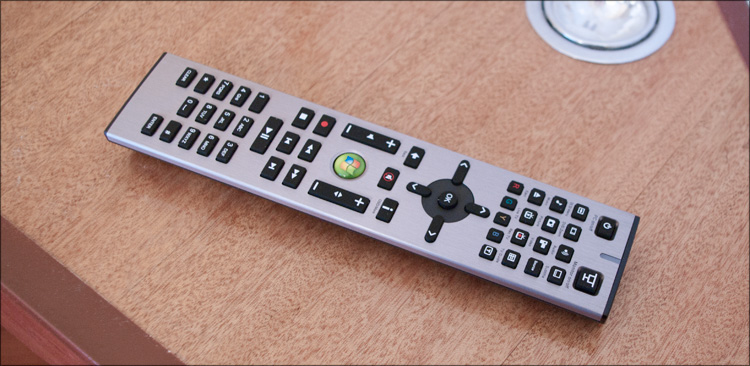
The rest is a regular computer, so it is hardly worth focusing on anything else. Although no, a couple more paragraphs about the touch screen and I will round out.
Relatively recently, I did a review of a touchscreen tablet running on the basis of the Windows 7 operating system — then I resented the inconvenience of managing the system ... no interface optimized, and so on. So ... apparently, it’s about the diagonal of the device) On the 10-inch tablet, working with your fingers was really inconvenient - typing the sentence on the on-screen keyboard (which occupied almost the entire screen) was a feat. In the case of a monoblock ... 21 inches are allowed to roam - it was much more convenient to control here! It's easier to get into the link, easier to type - the keyboard can, if desired, stretch to such dimensions that you can also type in boxing gloves. And not ... there is a capacitive screen.
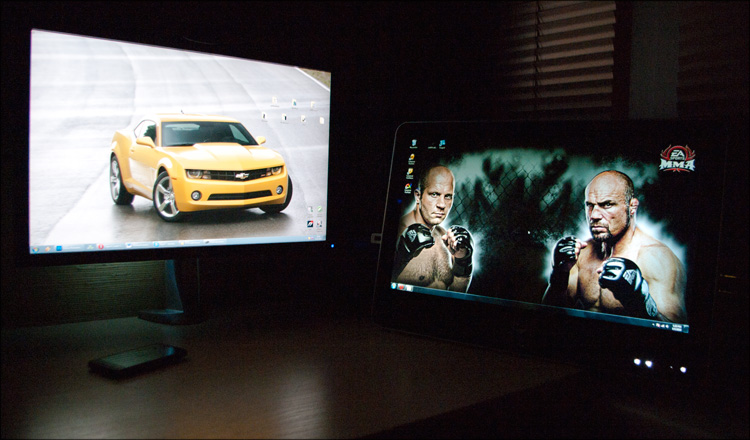
And still Fedor the best of the best!
In general, it will be more convenient with the mouse and keyboard, but when they are not at hand, you can poke a finger. I didn't have a second wired keyboard during the test, so I hooked on Apple's wireless keyboard — it worked like a clock.

 Large touch screen
Large touch screen
 Can be fixed to the wall
Can be fixed to the wall
 There is a remote control
There is a remote control
 Many different interfaces and connectors
Many different interfaces and connectors
 Separate SSD for the operating system
Separate SSD for the operating system
 High performance
High performance
 Silent
Silent
 Fully glossy, body and screen!
Fully glossy, body and screen!
 Low display brightness
Low display brightness
 Possibly price
Possibly price
Unfortunately, so far I can not say anything about the price of this device - this is an engineering sample, not yet available for sale. But I dare to suggest that the price for the top configuration will be up to $ 1,500, and the configs will be simpler - from $ 1,000.
I have often seen devices of this form factor, but I saw them exactly - I managed to get to know each other only now, thanks to this device. A lucky coincidence of circumstances - after all, I could not even know that Foxconn even took on monoblocks :) And now at least there is an idea of what these dishes are and under what sauces they eat.
In general, the device caused only good emotions - even the glossy screen could not spoil the impression, as it turned out to be quite practical in terms of fingerprint resistance. Accordingly, if you work with a mouse and keyboard, then the only problem is the glare, but you can fight them as well.
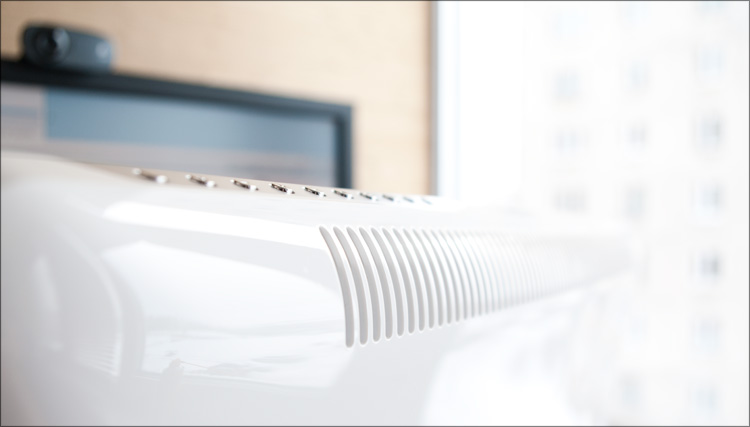
An undisclosed (for the time being) alternative to the system unit, which, in my opinion, is quite promising. Agree, it will be difficult (if at all possible) to find a laptop with a screen diagonal of 21 ", also with touch properties. And the monoblock has a large screen, connectors for all occasions, performance, upgradeability, and ... And you can type on any keyboard, not on the one that is built in. In short, there is freedom for the flight of fantasy, except that in a backpack such a "TV" is not particularly dragged. This monoblock can be found a lot of applications - from the "TV in the bedroom", ending with "a multimedia center in the hall." Play, watch movies, TV and photos, listen to music, chat on Skype and surf the Internet - a godsend for those who do not want to delegate the entire list to various media players, tablets and other music centers. That is, this is an option for those who need everything at once, with a minimalist design and for less than the cost of iMac)
During the test, it was difficult for me to figure out where I would put such a unit - precisely for the reason that I use different devices for different tasks, and I got used to working just for an uncompromising system unit. But my wife turned out to have a different opinion on this matter - she almost wanted a similar unit in the corner in the kitchen) Imagine if you are waiting for guests and you need to cook something - right at the stove, look for an exotic salad recipe online and start cooking. They started to wash the fruit and with the only dry finger you decide that under Black Eyed Peas you will prepare much more tasty - click and ready! There is no need for mice or keyboards ... and, you see, the endless network spaces will be much more convenient for even the most sophisticated cookbook!

But, as they say, people are no longer fed up with laptops - there is something interesting besides the “books”. Think about the tablets? No, no, how many can be about them ... let's better talk about monoblocks. With me - a review (with analysis!) Of a new device from Foxconn, with you - reflections on this class of devices, application scenarios and other ideas for getting rid of “dust collectors”)
I will not beat around the bush, but go straight to the specifications - as you were asked to do. Let's begin!
')
Technical Specifications of Foxconn Ai7

Processor : Intel Core i7-640M (two cores, 2.8 GHz, 4 MB L3, 32 nm, TDP 35 W, Intel 64)
Chipset : Intel H55
Graphics subsystem : ATI Mobility Radeon HD 5450 (1024 MB GDDR3)
RAM : 4096 MB, DDR3 PC3-10700 (667 MHz), two slots
Data storage : 2.5 '' Western Digital hard disk with 500 GB + 1.8 '' Toshiba 30 GB SSD.
Operating system : Microsoft Windows 7
Display : 21.5 ", 1920x1080 (16: 9, FullHD), glossy, touch (capacitive)
Drive : SlimType slot-loading DVD drive
Connectors : 6xUSB (2.0), eSATA, VGA, HDMI, RJ-45, DC-in, SPDIF-out, TV Tuner, YPrPb, Audio R / L, headphone and microphone jacks.
Wireless interfaces : Bluetooth (2.1 + EDR), Wi-Fi (802.11b / g / n)
Card reader : MMC / SD (SDHC)
Camera : 1.3 MP
Optional : remote control, wall mount option (VESA)
Body Material : Plastic
Dimensions : 542 x 374 x 48 mm
Weight : 7 kg
I will warn you in advance: most likely a slightly different series of devices will be on sale, which will be built on a different chipset - not on Intel H55 , but on Intel H61 . Accordingly, the processor will be different - Intel Core i3 / i5 (Sandy Bridge) and the name of the all-in-one (presumably Ai6100 ). There will be several modifications, but I have no exact specifications yet.

The box is large - it is quite possible to use this after unpacking on the farm. And initially it was:
- Monoblock
- Adapter from DVI to HDMI
- Adapter for TV antenna
- AC adapter and power cord
- remote control and 2 batteries
- VESA mount
- Fiber rag
- CD with software
- Manual

There was neither a mouse nor a keyboard ... I dare to suggest that there are two options - either the manufacturer made some elegant solution for entering data through the touch screen, or the choice of peripherals was left on the buyers conscience. The second option from the very beginning was a bit predictable ... so it came out.
Appearance
The entire front panel is completely glossy - even when I just took the device out of the box, I felt like pieces of salt were falling on my wounds) And my fears were not without reason - the screen was very bright, so the matte film did not hurt here. Where can I get a matte film of this size? A good question - most likely you will have to make an order, the benefit is also possible.

But with the stability of the panel to fingerprints full order - if the iPad (without film) can be wiped at least every 10 minutes, then there were almost no prints for two days of use.
There is a fairly thick black frame around the screen, but it is under the glass, so there are no obstacles to the care of the display. Top - the camera.
Below is a logo of two leaves; it looks pretty nice, but, to be honest, I see such a logo for the first time - the query “Foxconn logo” in Google did not confirm my guesses. A little later, it turned out that the product from the category “To be filled by OEM” was in front of me, that is, first of all, we could expect this device to appear in retail under the brands of other companies. And with the “leaves”, it is possible that unbranded barebone versions of a monoblock without a hard disk, tuner and memory will be on sale.

Along the entire perimeter of the front panel there is a thin plastic edge that smoothly passes into the back cover. The case itself is made of plastic - also glossy) But then there is no talk about prints at all - firstly on the white plastic prints are almost never visible (there will be modifications with other colors, such as blue or orange), and secondly the back cover with everyday use can be classified as hard-to-reach places, so you will only have to look in there once, during the first connection.

At the top there are 10 buttons divided into groups (Source, 4xOSD, 2xChannel, 2xVolume and LCD off); next to them is a built-in microphone.


On the right (when viewed from the front) is the drive slot, and on the left, the interfaces most in demand in everyday use.


The remaining connectors of the device are located on the back side and are divided into two groups. The first group is in a small depression on the right:

And the second - under the support.

The power button of the monoblock is on the back side, closer to the right edge - it is imperceptible, but you get used to its location in 2-3 inclusions.

By the way, as the first launch of the system showed, there are also several rather bright white LEDs on the front panel:

During operation, they are lit depending on the status of the work of the filling (Wi-Fi, Bluetooth, Power, etc.) and at first the feeling that these are touch buttons did not leave me. But no, you can't press them, but you won't be able to turn them off with regular means either.
On the back side there are also two covers of the system compartments, behind which everything is quite predictable. But there is a small surprise in those parts ... no, I won’t guess ... I offer 100 rubles and we don’t open the white box) In general, I’ll tell you everything below, but you could already notice something if you carefully read the specs at the beginning of the article.


Well, two more points. The monoblock leg is quite massive and allows you to put the device at different angles.

I almost started writing about the battery and battery life ... In general, everything works through an adapter (input: 100-240V ~ 1.8A 50-60Hz, output: 19V, 6.32A), which is very large. But the long power cord allows you to hide it anywhere.
Disassembly
At the request of the workers, I try to look inside each device - what to hide, it’s interesting to me and myself) And I decided not to avoid this candy bar.

The back cover rests on 9 screws (4 large and 5 small) - some of them are behind the white plugs, and one - under the void-sticker. As it turned out, the lid is made of a single piece of plastic (I always hardly imagine the molds for such products), from the inside of which the metal frame is securely fixed - for attaching the monoblock to the wall.

A superficial study of the viscera has made it clear that only the top holes are used for ventilation - it blows warm air from the processor and video card; accordingly, a part of the holes in the lower part can be safely stuck so that the dust inside does not accumulate so quickly.

General view of the filling:

A small tour of the details. Here is the power button and the front panel indicators (if you remove a small handkerchief and place a small translucent pad in front of it, the front panel indicators will not be so bright):

Next to them is one of the speakers - it is attached to the body through a rubber washer, which, apparently, should dampen vibrations and other sound source artifacts:

The second speaker is on the other side. In the middle - a cable to the screen (sort of like) and a light sensor:

Top bar buttons:

The wires of the interfaces are insulated from each other and for order are fixed on the metal frame of the device:



If you unscrew another 15 screws, then you will be able to remove the protective metal frame - just behind it is the most interesting:

Foxconn’s multimedia board:

Two mini PCIe connectors, one of which has a Wi-Fi module installed, and the other has a TV tuner from AVerMedia:


To the only system cooler ...

... two copper heat pipes fit - from the processor:

... and video cards:

Both the processor and the video card are not soldered on the board, so there is a chance that in the future the monoblock system can be slightly upgraded ... although finding suitable components, IMHO, will be very difficult.
Slot drive. The disks as a data carrier are slowly starting to die off, at least I have long ceased to use them ... but here the device is absolutely not superfluous - it will be easier to rearrange the Windows without bothering with the creation of a bootable USB flash drive.

Actually, the hard drive (from WD) and the 30-gigabyte SSD- “parasite” from Toshiba stuck to it) There are no more free SATA-connectors in the system.


... but there is an unused HDMI connector, which, unfortunately, in this model is in no way connected with the outside world. Perhaps it will turn into the second HDMI-connector in one of the modifications of the monoblock:

In general, everything is done very carefully, conscientiously ... although rare fingerprints are visible in some places :) Given that there were seals on the device, these are definitely the prints of the Chinese from the factory, and not colleagues from the "iron" party ( , and I know them all by prints)).
Turn on and work
Honestly, I was surprised at how this device works and how it turns on. You press the power button on the back side ... you hear a one-time crunching of the drive ... and ... and that’s all, you don’t hear anything else! Monoblock Foxconn Ai6100 works very quietly, for which I put a plus in a notebook.
This is an engineering sample of the device, so I closed my eyes to some "flaws". So, for example, initially there was no operating system on it ... more precisely, it was (Windows 7 Pro), but it needed to be “deployed” from a hard disk, which took about 15 minutes to complete.
From the moment you press the power button until the operating system is fully loaded, it takes 20-25 seconds - commendable. The desktop is pretty empty (with the exception of three shortcuts from CyberLink - YouCam, YouMemo and YouPaint), as in the taskbar - sorry, but as a rule, everything on the devices for sale is much more neglected.
The system performance index is 4.6 points, all due to “Graphics” - all other characteristics are higher by a point or even two. It's easier to see it once:

It is commendable - as practice shows, on systems with similar estimates (even if this index is rather abstract) HD movies go without problems - looking ahead, I was not mistaken.
As a processor in this modification of the device, a rather productive dual-core Intel Core i7-640M with a standard clock frequency of 2.8 GHz (up to 3.46 GHz in Turbo Boost mode) is used.




The role of the video card went to ATI Mobility Radeon HD 5450 , which carries a gigabyte of memory. This is an entry-level card with DirectX 11 support - in terms of 3DMark benchmarks it is analogous to GeForce GT 415M . In principle, for most of the tasks such a card is more than enough, but for games this is not the best choice - the same Crysis, NFS Shift and Left 4 Dead will go only at medium detail settings, or even low.

As I said, this device uses a symbiosis of a regular hard disk (500 GB for storing junk) and a solid-state drive (30 GB). The second, as it is easy to guess, is used for the operating system - hence the fast loading time and high scores in the system evaluation ... perhaps this is the combination that is currently the most profitable and it’s great that Foxconn knows about it. Offhand, I do not even remember the device from the same ASUS, which would use the same configuration.
To complete the picture - a couple of screenshots with the speed characteristics of both discs. WD:


Toshiba:




C FullHD-video is really no problem, moreover, regular speakers would be enough for family watching movies or listening to music. The remote control in this regard is not at all superfluous, although there is nothing outstanding in it; the usual, very high-quality remote control with a metal top and a rubberized “belly”. Initially, there is Windows Media Center on the all-in-one, but if you ask a question about third-party software, the device can be completely hung on the wall of one of the rooms, turning the candy bar into a multimedia processor.

The rest is a regular computer, so it is hardly worth focusing on anything else. Although no, a couple more paragraphs about the touch screen and I will round out.
Relatively recently, I did a review of a touchscreen tablet running on the basis of the Windows 7 operating system — then I resented the inconvenience of managing the system ... no interface optimized, and so on. So ... apparently, it’s about the diagonal of the device) On the 10-inch tablet, working with your fingers was really inconvenient - typing the sentence on the on-screen keyboard (which occupied almost the entire screen) was a feat. In the case of a monoblock ... 21 inches are allowed to roam - it was much more convenient to control here! It's easier to get into the link, easier to type - the keyboard can, if desired, stretch to such dimensions that you can also type in boxing gloves. And not ... there is a capacitive screen.

And still Fedor the best of the best!
In general, it will be more convenient with the mouse and keyboard, but when they are not at hand, you can poke a finger. I didn't have a second wired keyboard during the test, so I hooked on Apple's wireless keyboard — it worked like a clock.

 Advantages and disadvantages
Advantages and disadvantages
 Large touch screen
Large touch screen Can be fixed to the wall
Can be fixed to the wall There is a remote control
There is a remote control Many different interfaces and connectors
Many different interfaces and connectors Separate SSD for the operating system
Separate SSD for the operating system High performance
High performance Silent
Silent Fully glossy, body and screen!
Fully glossy, body and screen! Low display brightness
Low display brightness Possibly price
Possibly priceUnfortunately, so far I can not say anything about the price of this device - this is an engineering sample, not yet available for sale. But I dare to suggest that the price for the top configuration will be up to $ 1,500, and the configs will be simpler - from $ 1,000.
The end
I have often seen devices of this form factor, but I saw them exactly - I managed to get to know each other only now, thanks to this device. A lucky coincidence of circumstances - after all, I could not even know that Foxconn even took on monoblocks :) And now at least there is an idea of what these dishes are and under what sauces they eat.
In general, the device caused only good emotions - even the glossy screen could not spoil the impression, as it turned out to be quite practical in terms of fingerprint resistance. Accordingly, if you work with a mouse and keyboard, then the only problem is the glare, but you can fight them as well.

An undisclosed (for the time being) alternative to the system unit, which, in my opinion, is quite promising. Agree, it will be difficult (if at all possible) to find a laptop with a screen diagonal of 21 ", also with touch properties. And the monoblock has a large screen, connectors for all occasions, performance, upgradeability, and ... And you can type on any keyboard, not on the one that is built in. In short, there is freedom for the flight of fantasy, except that in a backpack such a "TV" is not particularly dragged. This monoblock can be found a lot of applications - from the "TV in the bedroom", ending with "a multimedia center in the hall." Play, watch movies, TV and photos, listen to music, chat on Skype and surf the Internet - a godsend for those who do not want to delegate the entire list to various media players, tablets and other music centers. That is, this is an option for those who need everything at once, with a minimalist design and for less than the cost of iMac)
During the test, it was difficult for me to figure out where I would put such a unit - precisely for the reason that I use different devices for different tasks, and I got used to working just for an uncompromising system unit. But my wife turned out to have a different opinion on this matter - she almost wanted a similar unit in the corner in the kitchen) Imagine if you are waiting for guests and you need to cook something - right at the stove, look for an exotic salad recipe online and start cooking. They started to wash the fruit and with the only dry finger you decide that under Black Eyed Peas you will prepare much more tasty - click and ready! There is no need for mice or keyboards ... and, you see, the endless network spaces will be much more convenient for even the most sophisticated cookbook!
Source: https://habr.com/ru/post/114003/
All Articles